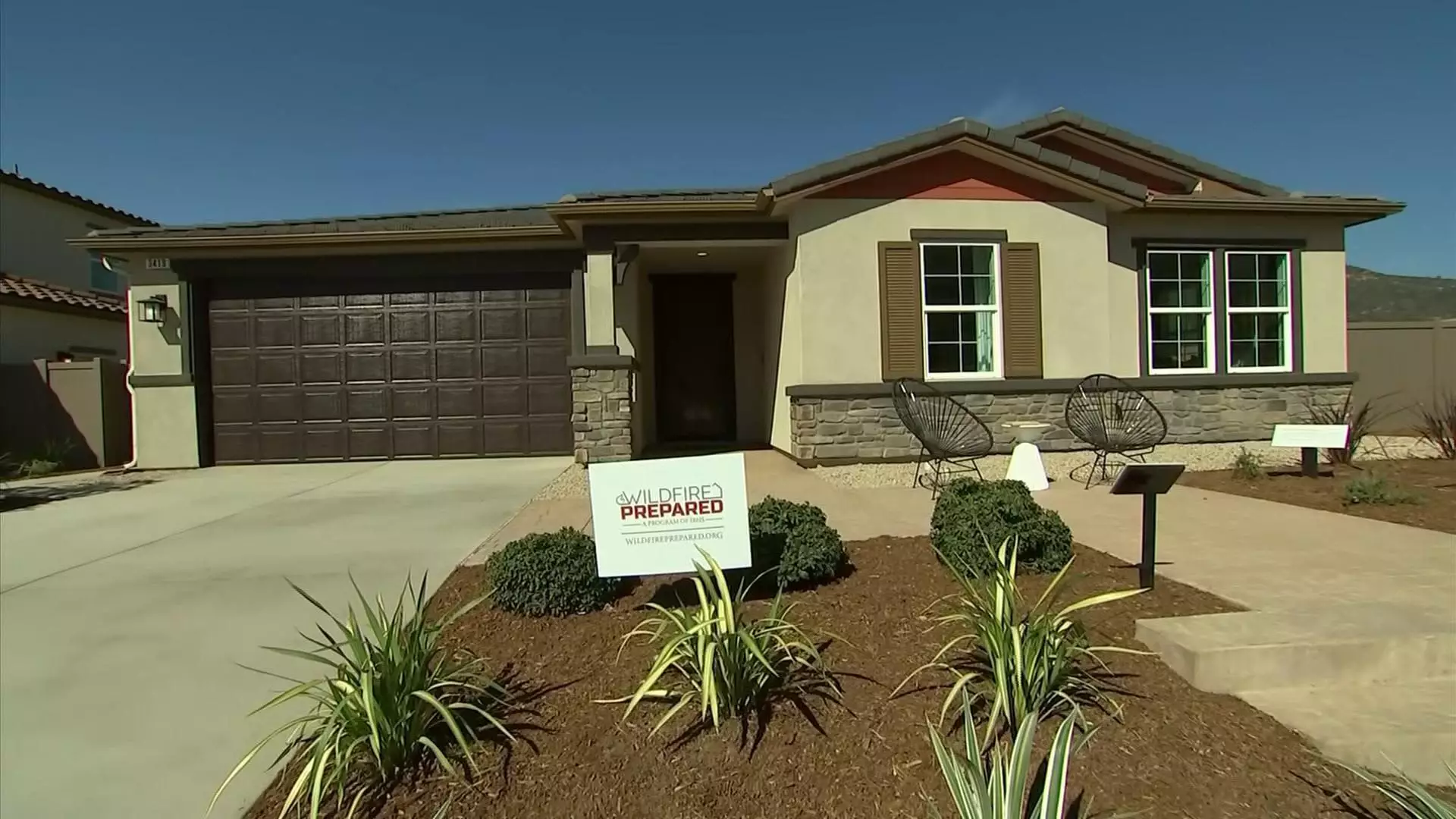In the wake of devastating wildfires that have ravaged communities across California, a beacon of innovation emerges in Escondido. KB Home has ambitiously launched what it touts as its inaugural “wildfire-resilient” community, featuring 64 single-family homes designed to withstand the fury of nature. This initiative symbolizes a significant shift in how we view residential safety, especially in regions increasingly threatened by climate change. Unlike a mere reactionary measure following catastrophes, this project illustrates a proactive approach—a responsible strategy that integrates advanced building standards that prioritize homeowner safety while recognizing the grim reality we face with escalating wildfire threats.
There is an urgent need for development that prioritizes resilience over traditional construction methods, and KB Home is at the forefront of this evolution. With environmental conditions becoming ever more dubious thanks to climate change, home builders must seize the opportunity to innovate. By aligning with the wildfire resilience standards established by the Insurance Institute for Business & Home Safety (IBHS), KB Home is not just following a trend but setting a precedent that could change the direction of home construction in fire-prone areas across the nation.
Building a Safe Haven with State-of-the-Art Features
The design elements incorporated into these homes are truly striking: covered gutters, non-combustible siding, and tempered-glass windows collectively create a barrier against three main fire hazards—flying embers, flames, and radiant heat. This is not just about aesthetics; it is about intelligent engineering that puts safety first. Homebuyers can rest easier knowing their homes are equipped with features designed to thwart destruction. However, one must question the real estate industry’s commitment to affordability. With prices ranging from $1 million to the low millions, the project caters to a demographic that is already facing significant financial hurdles.
Steve Ruffner, the regional manager of KB Home’s coastal division, admits that while they aim to keep costs down, the reality remains that these homes may still be out of reach for the average buyer. The intention behind this ambitious project may not align with the average Californian’s timeline; it’s clear that developers must tread carefully. The balance between producing affordable housing and meeting enhanced safety standards is a challenging tightrope to walk.
The Challenge of Acceptance and Insurability
Wright, the CEO of IBHS, highlights a critical point that bears repeating: “Part of the draw is not just to build a home that is survivable, but also one that is insurable.” The insurance landscape in California has dramatically shifted in recent years, with numerous providers retreating due to unbearable risks. This creates an unfortunate paradox for homeowners: as they seek to fortify their residences against environmental threats, the infrastructure of support, namely insurance, becomes precarious.
While KB Home’s initiative is groundbreaking, it raises a fundamental question about sustainability in a shifting landscape. How viable truly are these constructions if homeowners still face exorbitant insurance costs? The market must adapt rapidly to ensure these homes do not end up deserted due to affordability issues exacerbated by rising insurance premiums. Policymakers should take note, as they play a crucial role in incentivizing fire-resilient construction, paving the way for broader adoption of these concepts that transcend mere aesthetics.
Lessons from the Frontlines of Climate Change
The recent Palisades Fire, which spared homes constructed under these advanced standards while surrounding structures were obliterated, serves as a startling reminder of the potential of fire-resistant architecture. If such homes can weather a wildfire onslaught, that is not just a victory for those homeowners; it symbolizes the beginning of a much-needed narrative shift in how we confront these disasters. As climate change progresses, we must embrace fire-resilient methodologies, not only from a construction perspective but also as a lifestyle choice that stresses safety and community resilience.
Moreover, the initiative by KB Home is not merely about erecting fire-resistant walls but igniting a dialogue throughout California—and perhaps further afield—about the urgency of adapting our living spaces to withstand the challenges of climate change. Other builders must observe and derive insights from these developments to respond proactively to increasing demands for safe housing.
The unfolding of KB Home’s project in Escondido could serve as a paradigm shift for how we approach residential safety during pronounced environmental turmoil. Homeowners today must embrace a future where their homes are not just structures, but sanctuaries bolstered against the unpredictable assaults of nature. This isn’t just a developmental trend; it is an urgent clarion call for transformation in the housing industry, ensuring that each new home built becomes a foundation of security and steadfastness in the face of a rapidly changing world.

